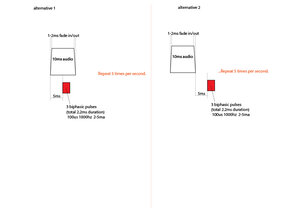Even if we have to steal one of the machines and use it 30 minutes a day into perpetuity, it maybe worth it to keep the noise off our doorstep.Thanks.
Thanks Chris. I just took some time and read a couple of Shore's recent papers - her 2018 pre-clinical trial of bimodal stimulation, and her 2019 Neuron review (which is a tougher read, to be sure). I now have a much better understanding of her work, theory, technique, etc. It's promising for sure. Though the fact that the tinnitus percept comes back almost immediately upon stopping bimodal stimulation is a bit of a bummer. Particularly since the long-term effects of the technique are unknown (meaning it may or may not be suitable for lifetime use).
So, she's promoting LTD in the cochlear nucleus. I think her Neuron review implies how this is done. Has no one tried to recreate her pipeline? Test it out?

This made me think of something. I was cruising YouTube and there was this nice lady talking about her experience with Lenire which is now up and going as many know and there are quite a few positive testimonials on YouTube.
This lady said when the 12 weeks was up, she lied about not being home so she couldn't return the device and she said she kept it and used it for 2 more weeks.

Me personally...when asked to return the machine? Sorry but my dog ate it along with my homework. Bad Fido.


 Member
Member
